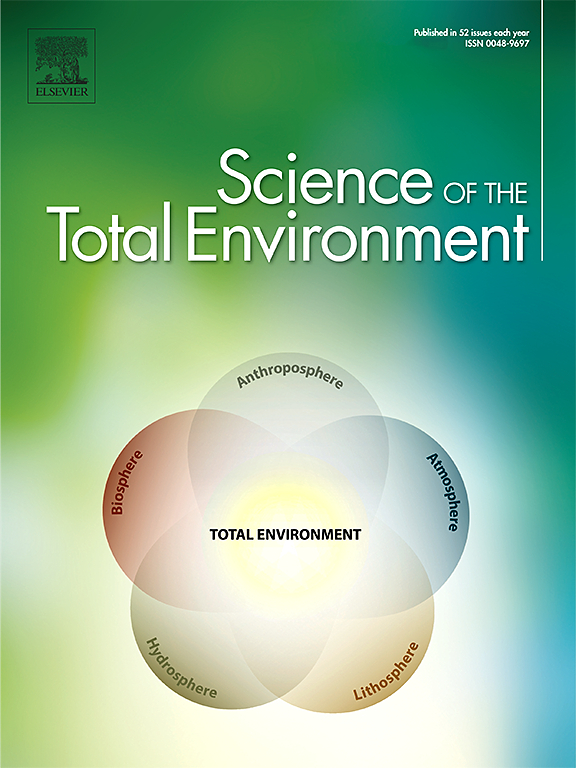Fertigation potentiality applying treated wastewater by partially saturated vertical flow wetland
IF 8.2
1区 环境科学与生态学
Q1 ENVIRONMENTAL SCIENCES
引用次数: 0
Abstract
Water scarcity and the environmental concerns associated with chemical fertilizers underscore the need for sustainable irrigation alternatives in agriculture. This study evaluated the viability of fertigation with treated wastewater from a full-scale partially saturated vertical flow wetland (SVF wetland), focusing on corn productivity, nutrient assimilation, soil macronutrient balance, and microbiological risks. Field experiments demonstrated that using treated wastewater as the sole nitrogen (N) source resulted in corn yields of 10,070 kg ha−1, comparable to conventional chemical fertilization (10,109 kg ha−1), while also promoting gradual nutrient release and reduced N losses. Conversely, mixed fertigation (wastewater + chemical fertilizer) led to lower productivity (from 8800 to 9075 kg ha−1), suggesting suboptimal nutrient synchronization. Soil analysis revealed that mixed N sources increased macronutrient accumulation (N: from 1.8 to 2.4 g kg−1; P: from 3.0 to 4.2 g kg−1; OM: from 18 to 40 g kg−1), whereas exclusive wastewater application maintained balanced nutrient levels (N: 1.5 g kg−1; P: 2.6 g kg−1; OM: 15 g kg−1). Additionally, the Quantitative Microbiological Risk Assessment confirmed that SVF wetland effluent meets safety thresholds for agricultural reuse, ensuring minimal health risks. These findings highlight the potential of SVF wetland-treated effluent as a safe, sustainable fertigation strategy, maintaining crop productivity and soil fertility while mitigating water and nutrient scarcity. Moreover, these insights support the development of water reuse policies in developing countries, where wastewater fertigation can significantly enhance agricultural sustainability, food security, and water resource management under increasing climate challenges.

求助全文
约1分钟内获得全文
求助全文
来源期刊

Science of the Total Environment
环境科学-环境科学
CiteScore
17.60
自引率
10.20%
发文量
8726
审稿时长
2.4 months
期刊介绍:
The Science of the Total Environment is an international journal dedicated to scientific research on the environment and its interaction with humanity. It covers a wide range of disciplines and seeks to publish innovative, hypothesis-driven, and impactful research that explores the entire environment, including the atmosphere, lithosphere, hydrosphere, biosphere, and anthroposphere.
The journal's updated Aims & Scope emphasizes the importance of interdisciplinary environmental research with broad impact. Priority is given to studies that advance fundamental understanding and explore the interconnectedness of multiple environmental spheres. Field studies are preferred, while laboratory experiments must demonstrate significant methodological advancements or mechanistic insights with direct relevance to the environment.
 求助内容:
求助内容: 应助结果提醒方式:
应助结果提醒方式:


